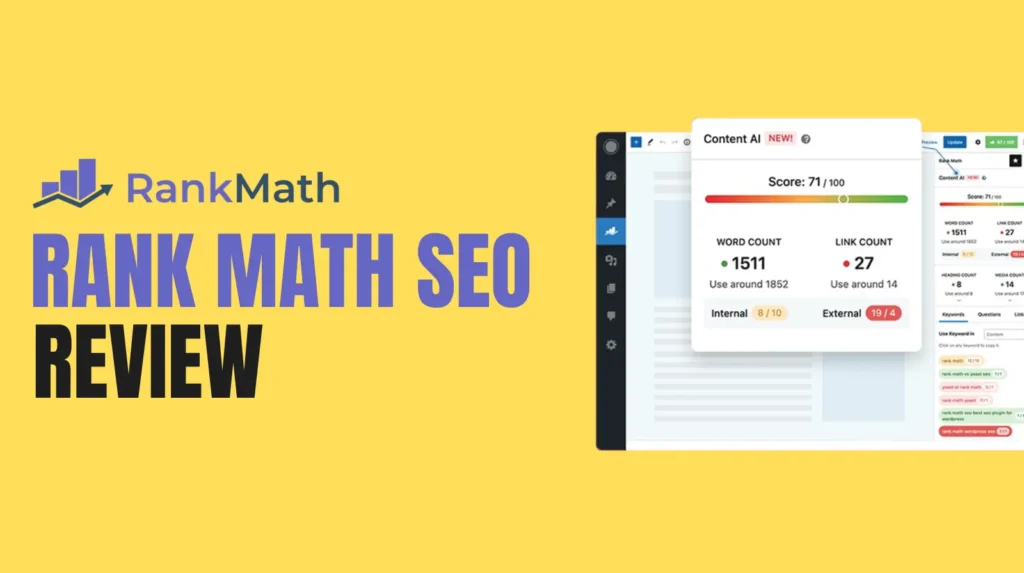How can B2B companies attract more leads at a lower cost than their current paid ad spends? This is a dilemma that faces a lot of B2B businesses, attracting quality leads while limiting spend on paid advertisements.
Fortunately, there exists a strategy that can both increase organic traffic and boost conversions without incurring additional expenses: Search Engine Optimization (SEO).
SEO aimed at B2B lead generation allows companies to become more visible to the right audience. However, it’s not just about visibility on Google; it’s about being discovered by the decision-makers during their searches.
When B2B companies adopt the right SEO tactics, they are able to generate more leads, improve conversion rates, and build scalable, sustainable growth.
This article discusses strategies, tools, and techniques that B2B companies can use to optimize visibility and maximize lead stimulation.
Why SEO for B2B Matters More Than Ever
B2B buyers now begin their journey online. They research vendors, review options, and read analyses before contacting anyone. If you do not appear in their initial searches, you miss out on critical opportunities.
SEO for B2B positions your business during all phases of the buyer’s journey. From the initial awareness to the decision stage, content established through SEO builds authority and trust.
Also, unlike paid advertisements that halt the moment sponsorship ceases, SEO continues to deliver value long after the work is done. When performed correctly, SEO for B2B will continue to strengthen a brand’s digital presence, drawing in high-intent customers time and time again.
Understanding the B2B Buyer Journey
When compared to B2C, purchases on B2B are methodical, well-planned, and involve several stakeholders. In relation, the buying cycle is of a much longer duration, and all of it calls for adequate SEO to be layered onto this multifaceted map.
Unlike B2C, every stage of the funnel requires distinct content, including, but not limited to, awareness-driving educational blogs, detailed topical guides for the consideration phase, and decision-driving whitepapers or case studies.
Any brand can greatly benefit from being indexed promptly and organically by strategically integrating long-tail keywords and addressing niche questions. Fulfilling user intent improves clarity and trust, in turn, building strong relationships with potential leads.
Keyword Strategy for B2B SEO
Finding the right keywords can be difficult, but always remember that the keywords selected always need to be relevant. In the case of B2B businesses, it should focus on niche terms, long-tail keywords, and solution-based sentences. Instead of going after the broad keyword “software,” try more focused questions such as “best project management software for remote teams.”
SEMrush, Ahrefs, and Google Keyword Planner are great in helping discover search terms. Studying competitor keywords also helps find gaps in the content. Do remember the primary keyword also needs to be blended into the text naturally.
Take, for example, SEO for B2B, which needs to be mentioned strategically in text, headers including meta. Google uses this data to understand the content and position biddable pages in the correct gaps under relevant keywords.
On-Page Optimization Techniques
On-page SEO revolves around improving meta titles, descriptions, content, and headers. Every page should be set to zone into one primary keyword with a few supported secondary ones.
Improve text structure with head tags (H1, H2 and H3) for ease of reading and guiding search engines. Internal linking is important, too. Linking and interlinking other pages contributes to the stickiness and enhances search engine crawling.
Include images, but do add ALT text, and don’t forget to compress for speedy loading. In addition, make sure your site is responsive and has a mobile-friendly design, as many B2B users have shifted to mobile.
Content Marketing as an SEO Tool
SEO for B2B companies hinges on a solid content strategy. You should have relevant blogs, videos, infographics, whitepapers, and even podcasts for your audience. Target Their concerns, interests and educative needs.
For instance, a factory manager might look to solve the issue of “How to Reduce Downtime in Manufacturing.” Creating guides or articles that address such issues would greatly enhance your traffic.
Do not neglect basic SEO best practices; use keywords, provide answers to relevant questions, and have calls-to-action (CTAs) to encourage the next steps. Sharing high-quality content, as well as earning backlinks, helps with domain authority and allows for better SEO.
Technical SEO and Site Structure
Technical SEO ensures that your website is easy for search engines to crawl and index. This includes optimizing your site’s structure, improving load speed, fixing broken links, and using HTTPS.
A clean site architecture with a clear URL hierarchy helps both users and search engines navigate easily. Use an XML sitemap and a robots.txt file to guide crawlers.
Structured data (schema markup) can help highlight your content in rich results, like FAQs or reviews. Regularly audit your site using tools like Screaming Frog or Google Search Console to catch and fix technical issues early.
Backlink Building for B2B SEO
Backlinks continue to be an important factor influencing search engine rankings. For B2B, the primary focus should be on acquiring backlinks from authoritative industry websites, directories, and publications. Through guest blogging, joint ventures, participation in industry forums or webinars, and other forms of branded content, one can build quality backlinks.
Producing primary research or analytics reports makes it easy for others to cite and link back to your work. Your SEO will take a hit if you employ spammy link-building techniques. A solid backlink profile enhances visibility on search engines, boosts ranking, and increases traffic from reliable sources.
Local and International SEO Strategies
For those in the B2B space, offering services to specific regions means you should consider optimizing for local SEO. Creating a Google business profile, using local keywords, and listing your business in nearby directories will help. Other users can leave reviews and write local backlinks that help boost visibility in that region, too.
For international markets, use hreflang tags and country-specific domains (ccTLDs) and translate to those languages. Localizing your SEO approach ensures you engage the right audiences in the various geographical areas in which you operate.
Leveraging WooCommerce Variable Pricing for Lead Generation
For B2B e-commerce shops powered by WooCommerce, having variable pricing can serve as a powerful lead magnet. With WooCommerce variable pricing, companies can outline different pricing models for variations of a product, such as its quantity, size, or even subscription length. This works well for B2B customers who regularly purchase in bulk or need custom quotations.
If you highlight variable pricing prominently and optimize product pages for SEO, you can attract high-intent traffic and convert leads easily. Also, gated pricing and quote request forms help you capture contact details to start the sales cycle in the B2B model.
Measuring and Analyzing SEO Performance
Measuring SEO profitability is equally as important. Check traffic and bounce rates, keyword ranking, and conversions using Google Analytics, Google Search Console, and Ahrefs. In Google Analytics, set up goals to track submissions for forms, downloads, or requests for demos.
Pay attention to the content that generates the highest number of leads and track keyword conversions. All this information helps fine-tune your strategy. Regular SEO audits help maintain alignment with set goals and dynamically changing Google algorithms.
Conclusion
In today’s digital-first B2B world, characterized by a predominance of digital interactions, Search Engine Optimization (SEO) is a must-have. It improves visibility, attracts the right leads, and decreases reliance on paid advertisement services.
Every aspect, from content strategy, technical SEO, and backlinking to variable fee pricing, contributes towards effective lead generation. Businesses often overlook SEO for B2B – with the right focus, they can engage with the ideal audience during critical moments, increasing organic traffic and improving lead conversion rates. Establish a solid strategy, track key metrics, and maintain compliance with industry standards. Over time, SEO will work wonders in propelling sustainable growth for B2B businesses.








